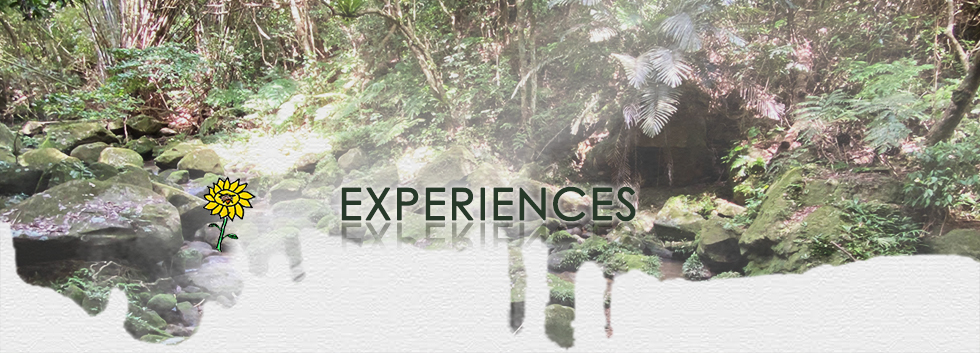Organized by Hsin-Ai
Mountain Forest Ecosystem
(A) XinXian Trail
On a sunny day during our 2020 summer vacation, we travelled southbound on Formosa Freeway and then via Provincial Highway 9 to Wulai District to participate in the XinXian Trail Tour hosted by the Society of Wilderness.
XinXian Trail is located in Wulai District of New Taipei City, known as “Doll Valley”. The trail is located on the side of Nanshi River, in between XinXian Suspension Bridge and XinXian Experimental Elementary School, with Neidong River emerging on the south. Nanshi River originates from Xueshan Range, it flows through a steep canyon with spectacular scenery. The most representative sceneries are Wulai Waterfall and XinXian Waterfall.
XinXian Trail used to be a passage from Wulai to Fushan with a total length of 1,318 meters. It has different ecological landscapes in the four seasons and preserved a relatively complete low-altitude ecological environment in northern Taiwan. The trail is a hotspot for sightseeing, birdwatching, plant watching, and butterflying.

Source: Wilderness Crossing
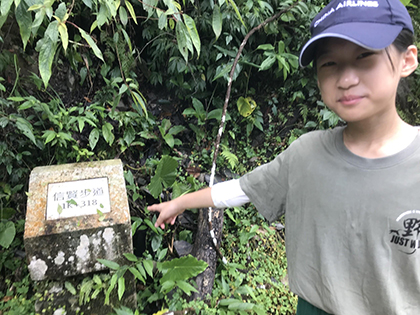
Source: Wilderness Crossing
The Society of Wilderness volunteers put us into groups and started the tour by walking through the suspension bridge. XinXian Trail is a flat and covered by gravel. The trail follows the river and mountain, passing through natural forest and numerous waterfalls It is a perfect place for forest bathing as the path is covered by broad-leaved greens and tall trees such as Cryptomeria, some plants are considered rare in urban areas. The steep hillside is covered by various native plants including Begonia Formosana, Taiwan Bicornuta, Giant Elephant's Ear, Lichen, Green Ramie, Formosanum Elderberry, India-charcoal Trema, Taiwan Polypody, Tuberous Sword Fern, Subcostate Crape Myrtle, Japanese Maesa, and Gold Silver Nightshade, etc, forming dense forest with diversified ecological environment and spectacular sceneries.
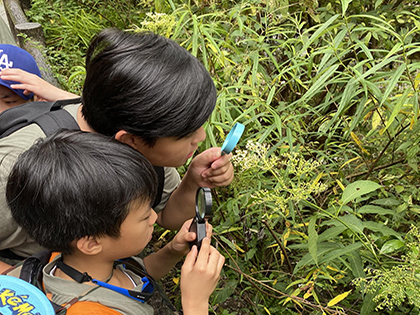
Source: Wilderness Crossing

Source: Wilderness Crossing
The rich ecological environment is an excellent habitat for animals and insects, which can lead to unexpected nature encounters. XinXian Trail is surrounded by sounds of birds and insects, wild monkeys hopping between treetops, contemplative Swinhoe's frog resting on the railing, and tadpoles swimming in the river.
The moist mountain side and riverside are important habitat for fireflies in northern Taiwan. At the beginning of March each year, two protected fireflies species can be seen - Aquatica hydrophila and Pristolycus kanoi.
The beautiful nature, pleasant and relaxing atmosphere filled with Phytoncide makes people want to take a deep breath while walking along the XinXian Trail. It is a trail suitable for families to take a walk and play in the water.
Through the tour hosted by the SOW volunteers, we had gained more insight into the trails and ecological systems, as well as the importance of protecting the natural environment and habitat for animals and plants.
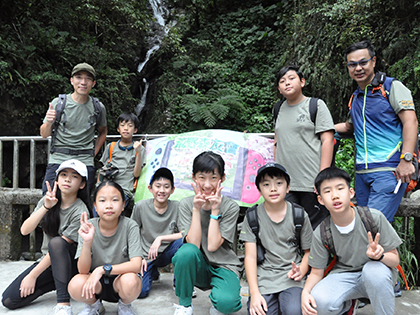
Source: Wilderness Crossing
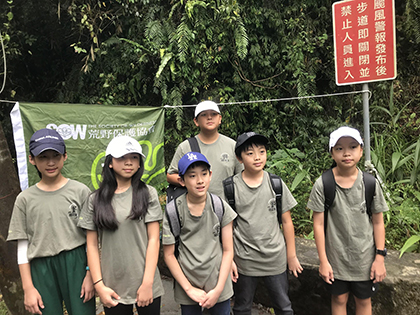
Source: Wilderness Crossing
(B) Mountain Cleanup
60% of Taiwan land is covered by forests. The forests not only contain valuable water resources, but also provide habitat for wildlife, and a symbol of Taiwan’s spirit. According to estimates from the Health Promotion Administration, Taiwan’s backpacking population is approximately 5 million. Due to lack of environmental protection awareness, a lot of waste has been disposed of in the mountains and forests, combined with trampling and blazing trails, causing devastated damages to beautiful nature and wildlife habitats. Therefore in 1995, the government initiated the “Leave No Trace” (LNT) movement. Through joint participation and effort of industry professionals, government officials, and academia, LNT aims to optimize hiking trails to create an environment where people can get closer to nature while reducing environmental impact.
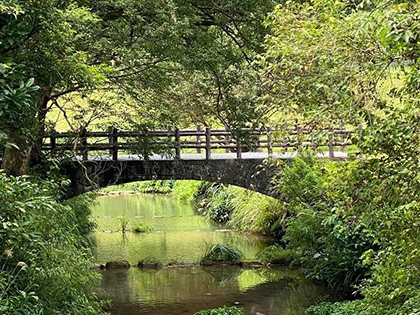
Source: Wilderness Crossing
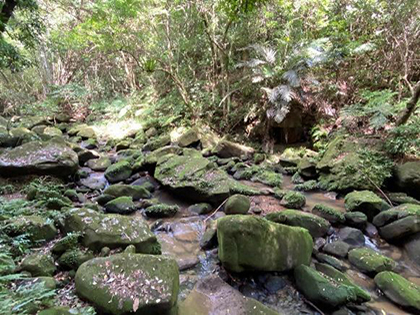
Source: Wilderness Crossing
Leave No Trace (LNT) 7-Principles
| 1、Plan ahead and prepare | 2、Travel and camp on durable surfaces |
| 3、Dispose of waste properly | 4、Leave what you find |
| 5、Minimize campfire impacts | 6、Respect wildlife |
| 7、Be considerate of other visitors |
In order to put LNT principles into practice, we planned the “Yuanjue Temple Trail Cleanup Activity”. Yuanjue Temple Trail is one of the trails most familiarized by Taipei citizens. The trail is located in the upper reach of the Dagou river in the Neihu district of Taipei City. In the process of the cleanup activity, we picked up a sizable amount of waste left by visitors. Majority of the waste were plastic bottles, followed by cigarette butts and food packaging. Tissues and plastic bags were also discovered. We sorted, weighted, packed and removed the waste we picked up, giving the trail a cleaner and tidy look.
| Mountain Cleanup Steps | |
Orientation
|
 |
Pick up waste
|
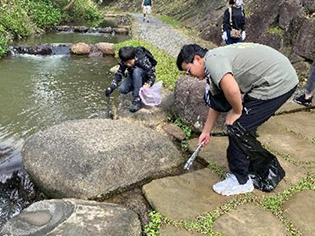 |
Sorting & Weighting
|
 |
Packing & Removing
|
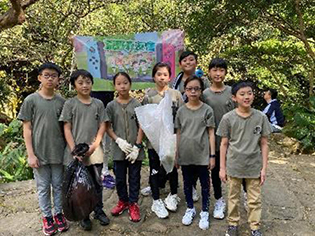 |
From the cleanup activity, we have realized that we can reduce plastic bottle waste if everyone can use reusable and environment-friendly water bottles. We can maintain a clean trail if we can pick up our own waste and dispose of them properly. Participating in the cleanup activity not only can remove waste directly from the trail, but also provide environmental education to the visitors indirectly. The key takeaway is not about the amount of waste we picked up; it is about experiencing human influence on the environment. The core value of the activity is to establish emotional connection to nature and have conceptual change that can further influence and change our behavior to contribute effort in protecting the environment.
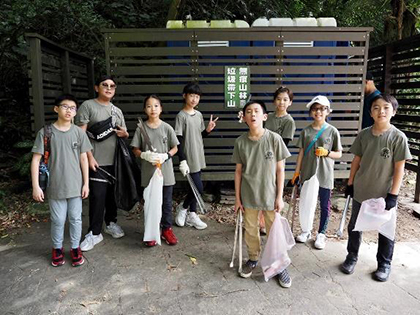
Source: Wilderness Crossing

Source: Wilderness Crossing
- https://e-info.org.tw/node/224926
- https://theme.coa.gov.tw/storyboard.php?type=c&web=C&id=238
- http://www.letsgoplay.com.tw/?p=6449
- https://recreation.forest.gov.tw/Trail/LNT

